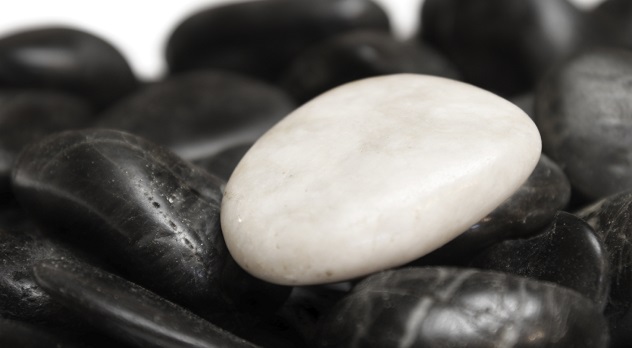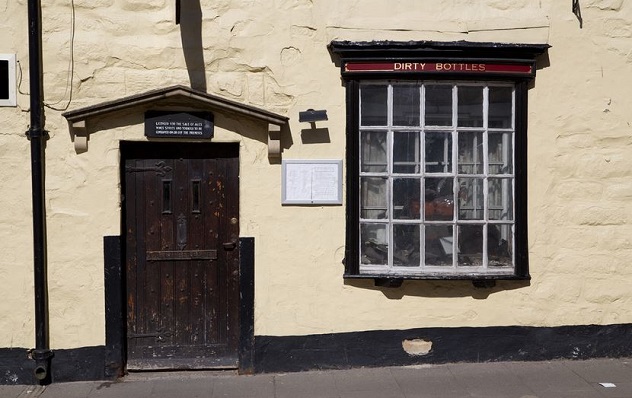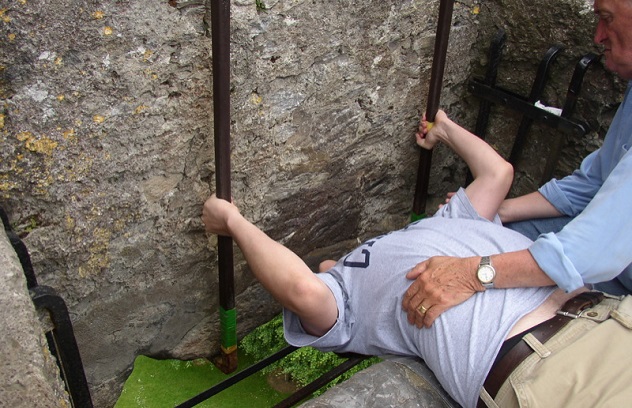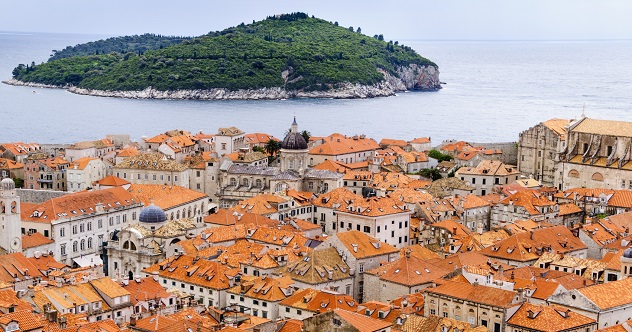 Music
Music  Music
Music  History
History 10 Less Than Jolly Events That Occurred on December 25
 Weird Stuff
Weird Stuff 10 Funny Ways That Researchers Overthink Christmas
 Politics
Politics 10 Political Scandals That Sent Crowds Into the Streets
 Weird Stuff
Weird Stuff Ten Bizarre Facts About The Doge Meme
 Our World
Our World 10 Ways Your Christmas Tree Is More Lit Than You Think
 Movies and TV
Movies and TV The 10 Coolest Stars to Set Sail on The Love Boat
 History
History 10 Things You Didn’t Know About the American National Anthem
 Technology
Technology Top 10 Everyday Tech Buzzwords That Hide a Darker Past
 Humans
Humans 10 Everyday Human Behaviors That Are Actually Survival Instincts
 Music
Music 10 Surprising Origin Stories of Your Favorite Holiday Songs
 History
History 10 Less Than Jolly Events That Occurred on December 25
 Weird Stuff
Weird Stuff 10 Funny Ways That Researchers Overthink Christmas
Who's Behind Listverse?

Jamie Frater
Head Editor
Jamie founded Listverse due to an insatiable desire to share fascinating, obscure, and bizarre facts. He has been a guest speaker on numerous national radio and television stations and is a five time published author.
More About Us Politics
Politics 10 Political Scandals That Sent Crowds Into the Streets
 Weird Stuff
Weird Stuff Ten Bizarre Facts About The Doge Meme
 Our World
Our World 10 Ways Your Christmas Tree Is More Lit Than You Think
 Movies and TV
Movies and TV The 10 Coolest Stars to Set Sail on The Love Boat
 History
History 10 Things You Didn’t Know About the American National Anthem
 Technology
Technology Top 10 Everyday Tech Buzzwords That Hide a Darker Past
 Humans
Humans 10 Everyday Human Behaviors That Are Actually Survival Instincts
10 Creepy Curses You Might Encounter On Vacation
Vacations should be a time for relaxing and having fun, and aside from the depressing realization that you’re not going to get another one for a whole year, the only things you want to bring home are some nice souvenirs for yourself and some cheap ones for friends. But there are some vacation destinations that might send something extra home with you. Some places come with a curse.
10 Koh Hingham, Thailand

The beaches of the little island of Koh Hingham are undeniably beautiful, covered with smooth black and white rocks. No one lives there, and visitors need to find someone on the nearby island of Koh Lipe who’s willing to take them. The trip lasts about 20 minutes, and once you’re there, you’d better make sure that you don’t take anything back with you.
According to the legend, the stones and beaches are protected by an ancient curse, cast by the god of Tarutao. Anyone who dares take a stone from the island disrespects the god, and in doing so, brings upon themselves a lifetime of bad luck. Even the tiniest pebble can invoke the curse on anyone who disrespects the wishes of the gods. And when it comes to any deity that’s promising bad luck, we’re thinking it’s better to be safe than sorry.
Every year, though, people ignore those words of wisdom, and more than a few tourists are said to have visited the island and scoffed at the curse, taking some of the smooth stones home with them. Many of those stones are mailed back in an attempt to break the curse that has followed them. Thailand’s national parks departments say they receive packages every year containing the gemstone-like rocks that people have taken home and later regretted.
While you’re on the beach, though, you can play with the rocks as you see fit. Many visitors leave behind messages written on the black and white stones. Others build miniature stupas and leave something behind—all their deepest wishes, prayers, and desires.
9 Ye Olde Cross Pub’s Dirty Bottles, England

If you’re planning an English vacation that covers more than just London, one of the most iconic locations you can include on your itinerary is Alnwick Castle. For the last 700-odd years, the famous castle (which has been seen in everything from Downton Abbey to Harry Potter) has overlooked the even older town of Alnwick. And not far from the castle is a little pub, officially called Ye Olde Cross Inn. Its strange front window is sealed off against a deadly curse.
The pub has been dated to sometime in the 17th century, and today it bears a different name: The Dirty Bottles. That’s because sealed between two windows in the front of the pub are a set of old, dusty bottles. It’s a sharp contrast to the sophisticated, modern look that the pub sports now. However, the bottles are such a part of the pub’s history that when it was redone, the bottles stayed—safely out of reach of curious guests.
According to the story, the bottles were originally arranged in the window by the pub’s innkeeper. As he was setting up the display, no doubt hoping to tempt passersby with the promise of a tasty beverage, he had a heart attack and died on the spot. The innkeeper’s widow placed a curse on the bottles, saying that anyone who moved or touched them would suffer the same fate as her husband. The display was sealed, and the bottles remain.
It’s not clear if there were any other instantaneous deaths attributed to the ill-fated bottles, but there’s something poetic about the legacy of the bottles and the old innkeeper. He was trying to attract customers with his display, and hundreds of years later, it’s still doing exactly that.
8 Pele’s Curse, Hawaii

Around eight million tourists head to the beautiful island paradise of Hawaii every year. Sadly, over the last 50 years or so, they’ve had an incredibly detrimental impact on the state’s wild beauty. Many were taking souvenirs (usually lava rocks) home with them, but fortunately, the goddess Pele was there to look over her island.
Potential visitors are warned about it in all the guidebooks and tourist materials. Anyone who takes Pele’s natural treasures home will suffer her wrath in the form of a curse, a fate that involves a lot of bad luck.
And the curse seems to work. The Hawaiian post office regularly receives packages containing stolen treasures. From stones and rocks to sticks and shells, countless tourists mail their stolen souvenirs back. Some include letters to Pele herself. Others detail the bad luck their theft has brought them. Packages and letters attribute death, depression, illness, and—bizarrely—the “bad luck” of winning a lottery that wasn’t as big as they’d hoped. It’s all thanks to Pele’s bad luck curse.
Some proclaim to not even believe in the curse or to have suffered bad luck at all . . . but they think the theft is nevertheless standing in the way of their good luck.
Park officials are a little baffled at the success of the curse, mainly because there’s no real basis for it. Most curses are rooted in some sort of historical events or religious beliefs, but this one isn’t. Officials even say that it’s mildly offensive when it comes to the Polynesian gods.
So where did this curse come from? Well, it was invented by a park ranger who grew sick and tired of telling people it was illegal to take rocks from the islands. The earliest mention of the “curse” was from 1946 when someone incredibly smart figured if people wouldn’t listen to the law, then perhaps they’d listen to the supernatural. By the mid-1970s, journalists had written numerous articles about all the packages sent to Hawaiian hotels, all in hopes of breaking the “curse.”
7 The Bad Luck Blarney Stone, Ireland

Yes, we’re talking about that Blarney Stone. It’s more commonly associated with good fortune and the gift eloquence, especially for those who lean backward over the castle parapet to kiss it. People have been smooching this stone for more than 200 years, and while we’re not going to get into the idea of what the locals do to it, we can say the Blarney Stone has an incredible history.
According to some legends, it was the deathbed pillow of Saint Columba. Others say it was used to determine the right of royal succession. It’s also been claimed that the stone was brought back from the Crusades, and some even speculate that it’s the very stone Moses drew water from.
Kissing the Blarney Stone might give you the gift of gab, but taking any stones from the castle is an entirely different story. According to tradition, stones removed from the castle aren’t “taken.” They’re only “borrowed.” After all, they’ll eventually find their way back to the castle . . . one way or another. Most are sent back by those who took them, hoping to get rid of the bad luck they’ve suffered after leaving Ireland with a piece of Blarney Castle.
This isn’t just an old legend, either. In 2009, Blarney Castle posted a cautionary tale on their website, telling of a down-on-his-luck Canadian who didn’t heed the warnings. His piece of the Blarney returned with a request that the castle staff return it to its rightful place, which they did.
And in 2011, an American woman found out that anyone who possesses a piece of Blarney Castle will be haunted by bad luck, not just the ones who “borrowed” it. After buying a piece of the castle at an estate sale, she reported that her work was slowing down. Afterward, an unmanageable depression settled over her. According to the woman, the house where she’d bought the stone had been full of religious artifacts and a creepy vibe. The homeowner himself had a sad, solitary life. When her own depression wouldn’t go away, she sent the stone back and felt instant relief as soon as it was in the mail.
6 Lokrum, Dubrovnik

The earliest mention of the religious settlements on Lokrum Island dates back to around 1023. According to the story, one of the island’s earliest supporters was Richard the Lionheart. On his way back to England after the Crusades, his fleet was nearly lost. Appealing for divine help, he promised to build a church if he and his men were saved. They were, and he gave the money to the city of Dubrovnik.
By 1667, piety had long been forgotten. In the wake of an earthquake, citizens of Dubrovnik wanted to sell the island for the money needed to rebuild the city. In the process, that meant evicting the order of Benedictine monks that had settled there. The legend says that although the Benedictines fought the eviction, they were eventually kicked off the island. Before they went, though, they said one last mass and formed a procession around the island. Carrying upside-down torches, they walked around the island three times, declaring that anyone using it for personal pleasure would be cursed.
Supposedly, it worked. The island has been sold numerous times, and there have been a weirdly high number of accidents among its owners and vacationers. Wealthy nobles found themselves bankrupt, ships were destroyed, and people died. When an Austrian noble started rebuilding the monastery with the intention of making it a summer home, his audacity—which included engraving the building with his own initials—earned him the ire of the curse. The noble was eventually sent to Mexico where he was shot by revolutionaries. Other island owners were exposed as frauds and died in freak storms, suggesting that a pleasurable trip to Lokrum Island might not end as well as it starts.
5 The Ayer’s Rock Curse, Australia

Tourists call it Ayer’s Rock. To the Aboriginals, it’s Uluru. Either way, it’s an incredibly odd rock that’s so close to the geographic center of Australia that we’re surprised it doesn’t feature in more ancient astronaut theories. It’s one of the world’s largest monoliths, and it’s such an impressive sight that, too often, tourists want to take a piece home with them.
Ayer’s Rock has an incredible cultural and spiritual significance to the people that live there, and the relentless flow of tourists has always been something of a sore point. While climbing on the rock is technically legal, doing so means you’re walking all over what the ancients called “dreaming tracks.” However, the rock seems to have a built-in defense mechanism, and many that take a souvenir find themselves in a hurry to send it back.
The administrators of the monolith’s surrounding national park say they get around one package a day containing pieces of the rock that were taken. Sometimes, the packages include a note detailing the misfortunes the rock brought and a plea to make it stop already. Administrators have heard stories of everything from illness to romantic breakups to death, all attributed to Ayer’s Rock.
Some people don’t take just a few pebbles, either. One package contained a 32-kilogram (70 lb) piece of stone, sent from South Australia. A 9-kilogram (20 lb) piece was posted back from Germany, and when one university student did a project on the curse, she found about a quarter of the people who’d taken souvenirs from the rock thought they’d picked up a little bad luck as well.
4 Langkawi Island, Malaysia

Langkawi Island is a beautiful stretch of beachfront paradise, and while it’s a tourism hot spot, the protection of UNESCO has kept it from becoming a commercialized wasteland. It’s also said to be cursed, but that all that bad luck might’ve recently run its course.
It started in 1819 when a local woman named Mahsuri was executed. Officially, her crime was adultery. Unofficially, it was rumored that the village chieftain had taken a fancy to her, and she had rejected him. Infuriated, he had Mahsuri put to death, using her kindness as an excuse. While her husband was away at war, she’d given shelter to a wandering minstrel, and now, it meant her death. The chieftain and his first wife—who was jealous of the younger woman—issued the condemnation.
As she died, Mahsuri cursed the island to see no peace or prosperity for the next seven generations. No one is certain why she chose to curse the island for that specific amount of time. But the curse seemed to work, and the island fell into an incredibly dark period. Both starvation and invaders swept across the island, but in 1980, Langkawi got a new lease on life. The prime minister declared that he wanted to make the island into a tourist destination spot. Slowly, hotels and resorts were built among the huge tracts of untouched paradise.
However, the growth didn’t really start until a singular event that makes us take back everything we’ve ever said about doubting the power of a deathbed curse. It was only with the arrival of Wan Aishah bt Wan Nawawi, the seventh-generation descendant of the ill-fated Mahsuri, that prosperity returned to the island. And you can still visit Mahsuri’s burial site, immortalized with an elegant tomb.
3 The Fairy Forts And The Curse Of Tara, Ireland

Ireland is still something of a magical, mystical place, and while that’s why it attracts so many tourists each year, it’s also why those tourists should be careful lest they attract some unwanted attention from Ireland’s fairy folk.
Even during the 1950s, it was common practice to offer the peskiest fairies—the pooka—a glass of liquor in hopes they would take their bad luck elsewhere. It was also normal to give a warning whenever you were dumping water out, just in case a fairy happened to be nearby. Even today, there are certain things that just aren’t done for fear of angering Ireland’s supernatural residents. They’re a touchy sort, and according to all the ancient lore, messing about with their homes will bring their wrath down on your shoulders.
There are thousands of ring forts throughout the Irish countryside, and it’s said they’re the remains of fairy forts. As such, they’re sacred ground, and disturbing them means that you’re courting some dire consequences. Throughout history, the beings that protected fairy forts were said to abduct children, cause crops to fail, and make animals become barren. They also cursed humans and livestock alike with bad luck, especially if they were called.
Today, fairy forts are mostly associated with illness, bad luck, and even death. These threats are still taken pretty seriously. In 1999, plans for a bypass were changed because the original route would’ve required the removal of a hawthorn bush that allegedly served as a pre-war rallying point for Munster fairies.
In 2007, Ireland’s new M3 motorway destroyed a 4,000-year-old astronomical and religious site. It wasn’t long after that personal tragedy and economic downfall began to occur. Even buildings started collapsing, all thanks to the Curse of Tara. Believe it or not, it’s next to impossible to visit Ireland without crossing sacred ground . . . and there’s no harm in being respectful.
2 Chief Niwot’s Curse, Colorado

Chief Niwot’s curse was placed on the beautiful lands around Boulder, Colorado, and it’s a different sort of curse. There’s no bad luck or misfortune involved. Instead, it’s the curse of love.
In the mid-19th century, Chief Niwot and his people spent much of their time in the Boulder Valley. He was an incredible peacekeeper, not only with the white settlers, but also with different native tribes in the area. However, clashes between the different groups were inevitable, and when Chief Niwot met with the first gold miners heading into the unsettled frontier, he saw the inevitable and placed a curse on the land.
According to the story, he said, “People seeing the beauty of this valley will want to stay, and their staying will be the undoing of the beauty.”
Chief Niwot’s curse was effective. Settlers heading west didn’t want to leave the Boulder Valley, and with the settlers came more conflict and murder. Even Chief Niwot died in the aftermath of a massacre of Cheyenne and Arapaho by Colorado militiamen. His curse still stands today, with visitors deciding to move to Boulder or at least return on a regular basis. It all gives credence to the idea that Boulder Valley is a place that captures the heart of its visitors—for better or worse.
1 The Cecil Hotel, Los Angeles
The Cecil Hotel gained major attention when the body of 21-year-old Elisa Lam was found in its rooftop water tank. She’d been there for two weeks already, and as if that wasn’t bad enough, some disturbing video footage of her last moments gave the internet chills. That was in 2013, and it turns out she might’ve been the latest victim of the cursed hotel.
Through the 1950s and 1960s, the Cecil was the place to go for people wanting to commit suicide by jumping. One woman even landed on a passerby, killing them both. It was also the home base of Richard Ramirez, the serial killer known as the “Night Stalker.” In 1985, Ramirez had a top room in the Cecil, finding many of his victims among the nameless transients staying in the hotel’s notoriously cheap rooms. The dumpster behind the hotel was the perfect spot for Ramirez to dispose of his bloody clothes.
In 1991, a journalist studying crime in LA moved into the Cecil. He’d later be fingered for killing three women, most likely in a grisly tribute to Ramirez, a story line that was picked up in American Horror Story: Hotel. There’s also the unsolved murder of “Pigeon Goldie,” a retiree who spent her time feeding the pigeons and who died an incredibly brutal death in her hotel room.
In 2007, new owners tried to give the hotel a new lease on life with a renovation and a name change, but Los Angeles police still show up frequently. The hotel that was known as a cheap and discreet place to stay in previous decades seems unable to shake its curse as it’s now invariably associated with drug dealing and a high number of domestic abuse calls.








